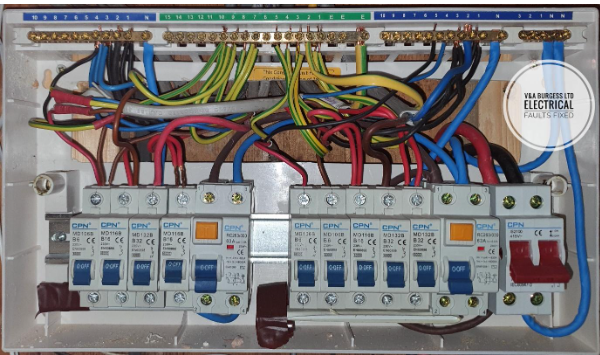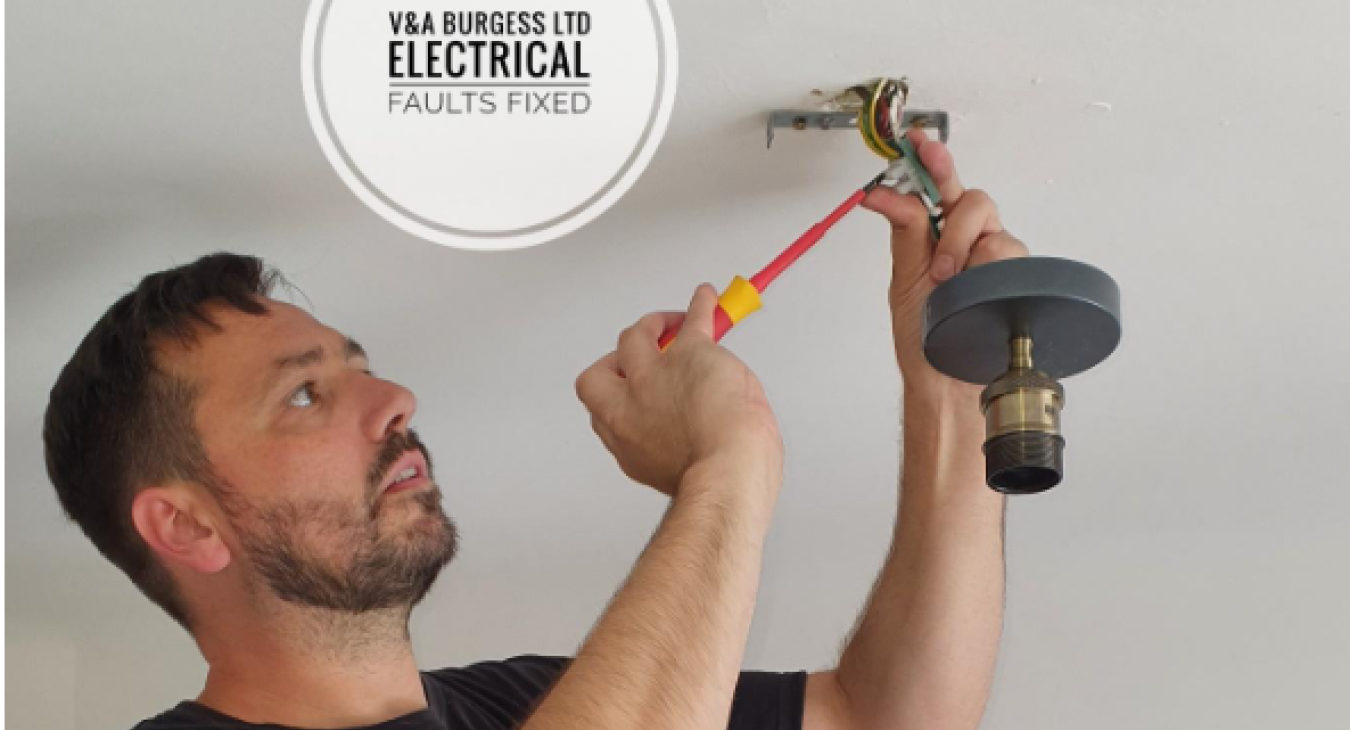As a Qualified Electrician and Electrical Tutor in the UK I am often drawn in to debate regarding DIY electrical works. What kind of work is allowed and what is prohibited? Is DIY electrical work legal in the UK?
In this article we will cover some common misconceptions, myths, and outright falsehoods along with discussing the safety aspects of electrical installations, risks of electric shock and how this relates to DIY electrics.
Table of Contents
- Is DIY electrical work legal in the UK?
- Understanding Part P Building Regulations
- Minor Works You Can Legally Do Yourself
- Testing and Verification of Work
- Jobs That Require a Professional Electrician
- Notifiable VS Non-Notifiable Work
- Safety Equipment and Tools for Legal DIY Work
- Understanding the Consumer Unit / Fuse Box
- Emergency Procedures and Power Isolation
- Documentation Required for DIY Work
- Insurance Implications with DIY Electrics
- Finding a Registered Electrician
- Legal Requirements in Different Zones
- Local Authority Building Control
- DIY vs Professional Work and Costs
- Summary
- Frequently Asked Questions
1) Is DIY electrical work legal in the UK?
Essentially yes but the answer is somewhat more complicated than this. Theoretically, it is perfectly legal to carry out DIY electrical work in the UK and not break the law HOWEVER, there is more to electrical work than just the concept of 3 wires. How hard can electrics actually be? Its only 3 wires, right? Whilst carrying out electrical work may be legal, there are many unwitting enthusiastic DIY’s that will fall foul of regulations and legislation and potentially land themselves in hot water whilst doing so.
Back to top2) Understanding Part P Building Regulations
The building regulations are a Statutory set of regulations that apply to most new buildings and most alterations to existing buildings in the UK. Statutory regulations are law and failing to comply with these requirements can lead to penalties. Different parts of the building regulations relate to different parts of your home. Part P of the building regulations relates to electrical safety and the requirements.
For more information on the different parts of the building regulations and that which they relate to, you can visit the "APPROVED DOCUMENTS" part of the government website.
Back to top3) Minor Works You Can Legally Do Yourself
There are many small electrical jobs that you can do yourself that include:
- Wiring A Plug
- Changing a Plug Socket Face
- Installing Replacement Light Fittings
- Changing light bulbs
and more.
Beware, working on electrical systems comes with requirements under BS7671 Wiring Regulations and EAWR1989 to carry out work safely, in accordance with the requirements AND possibly most importantly, TESTING REQUIREMENTS.
Back to top4) Testing and Verification of Work
When carrying out electrical work, it is absolutely vital to carry out electrical testing on the existing circuit prior to commencing work to ensure that there are no existing issues. Furthermore, in accordance with regulation 132.16 all earthing and bonding requirements must be sufficient along with the capability and condition of the existing equipment to ensure that any alterations will not have a detrimental effect.

Electrical testing is the MOST IMPORTANT and necessary aspect of electrical work and this is where DIY electrical work becomes virtually impossible to carry out in accordance with the requirements. The average DIY enthusiast will possess neither the knowledge, skill, or electrical test equipment to carry out electrical testing and verification prior to and following electrical work.
Back to top5) Jobs That Require a Professional Electrician
Nearly all electrical jobs will require a professional electrician to carry out the works safely. As mentioned above, the wiring regulations and statutory requirements will seldom be met by anyone other than an experienced and qualified electrician. Having said that, it is generally considered safe and reasonable to rewire a plug top so long as a useful guide is followed.
Back to top6) Notifiable VS Non-Notifiable Work
Various works in England and Wales is notifiable under Part P regulations. Notifiable work in dwellings will include:
- Rewiring a property
- New Installations
- Installation of New Circuits
- Work on Electrics in Special Locations
Where work is notifiable, it must be notified to the local authority building control department in addition to the other requirements of the wiring regulations and testing requirements.
Back to top7) Safety Equipment and Tools for Legal DIY Work
Whilst an exhaustive list of tools and equipment is not possible to list here, there are as a minimum, a number of essential pieces of equipment and tools that will be required in order to safely carry out DIY electrical work. The cost of these items is likely to exceed the cost of hiring a competent electrician to carry out your electrical installation work. As such, carefully consider whether it is worth attempting your own electrical work in the first place.
Equipment List
- VDE certified screwdrivers
- VDE certified Pliers, side cutters and wire strippers
- Crimping Tool, Ferrule Crimper
- Calibrated Multifunction Tester i.e. Kewtech, Megger etc.
- Copy of IET Wiring Regulations BS7671
- Approved Voltage Indicator
- Proving Unit
Sundries
- Electrical Tapes
- PVC Sleeving
- Crimps, Ferrules
- Electrical Screws
- Connector Blocks, Clamp Connectors, Junction Boxes
8) Understanding the Consumer Unit / Fuse Box
The consumer unit is the brains of the electrical installation and has many electrical tasks to carry out including:
- Electric Shock Protection
- Overcurrent Protection / Short Circuits
- Division of the Installation into Circuits
- Arc Fault Protection
- Overload Protection
Preventing issues from faulty wiring

Any electrical job begins at the consumer unit or fuse box. Whether that is establishing if the unit is fit for purpose, the circuits are safe to extend, the earthing is sufficient or the electrical shock protection is up to date. Within the consumer unit there are a number of switches. These are either circuit breakers, RCD devices or RCBO devices.
Selecting the correct Overcurrent Protective Device for a new circuit or ensuring that cable sizes are correct for the existing OCPD is one of the first steps a competent person will do to ensure that electrical circuits are not put at risk.
There are many different parts to the consumer unit and each has its own purpose and task.
Back to top9) Emergency Procedures and Power Isolation
No DIY Electrical work can take place without first following safe isolation procedures. Safe isolation is vital to prevent injuries, electrical hazards, and fires. Serious injuries can occur if safe isolation procedures are not followed. Contrary to popular belief, it is not enough to simply turn off the circuit that you are working on. An approved voltage indicator needs to be used and checks on the supply need to be made before carrying out electric work.
Back to top10) Documentation Required for DIY Work
As with any electrical work, DIY electrical work does not escape the need for certification and documentation. Before, during and following electrical work, various tests need to be carried out including earth continuity, insulation resistance and continuity of other conductors to ensure that the wiring and electrical circuits are safe to re-energise. These safety measures cannot be skipped as they are part of the wiring regulations. Not only can electrical problems occur from inadequate testing procedures but safety requirements will not be fulfilled unless testing has been carried out and the results documented correctly on the relevant certificate.
Back to top11) Insurance Implications with DIY Electrics
Should your insurance company become aware of DIY electrical work that has been completed without following the correct guidelines, procedures, and documentation, it is likely that a home insurance claim may be refused on the basis of incorrect or dangerous works. There are a number of reasons why your home insurance may not cover electrical work or other claims so it’s important to check with them first if you are planning DIY electrical installation.
Back to top12) Finding a Registered Electrician
In the UK currently (2024-2025) there is not an electrical safety register. There are a few competent persons schemes around that annually inspect and check electricians to ensure that they are meeting the requirements of safe working and installation practices however. If you need to find an electrician that is registered to sign off their work and notify to building control then the NICEIC or NAPIT will each have a list to enable you to find a suitable part p electrician. These schemes are the closest thing to a safe register and guarantee that scheme members hold the relevant insurance, qualifications, and necessary skills to carry out the requirements of the building regulations.
Back to top13) Legal Requirements in Different Zones
Not every area of the home presents the same electrical risks. There are greater potential risks of electrical shock in areas like the bathroom which is considered to be a special location under the wiring regulations. Almost any electrical work carried out inside a bathroom is likely to be a notifiable job and will need a professional and registered electrician to carry out the work and sign it off.
Back to top14) Local Authority Building Control
If you are absolutely determined to carry out the electrical work yourself, have the correct tools, insurance, knowledge of the regulations and test equipment then larger electrical jobs will still need to be notified to the local authority building control department. They will need to be informed prior to work taking place and will likely want to inspect the work throughout the installation process.
Smaller electrical jobs like extending a lighting circuit to add spot lights in a room that is not a special location will NOT require building control approval. The work will still need to comply with the electrical regulations (BS7671) however and will still need a minor electrical work certificate (MEIWC).
Back to top15) DIY vs Professional Work and Costs
Considering the extensive cost of equipment, tools and knowledge required to safely carry out electrical work, it may be best to consider employing an electrician to carry out work on your behalf. Electrical installation, testing and inspection are all complex tasks and not quite as simple as online DIY videos may seem to make out. Electrical DIY in general is a rather bad idea and for your peace of mind, this author would always recommend seeking professional help with electrical work.
Back to top16) Summary
Much DIY electrical work in the UK is legal to carry out but in reality, meeting the stringent regulations, testing requirements and safety checks will be well beyond the capabilities of most DIY enthusiasts and should be left to the professionals. This will give you peace of mind and ensure that things are done correctly.
Back to top17) Frequently Asked Questions
17.1) Is it a criminal offence to do DIY electrics?
No. But there may be serious repercussions if laws, guidelines, and safety testing is not carried out.
17.2) Is it safe to swap a light fitting myself?
In some instances, yes. Problems can occur if testing is not carried out. For instance, checking earth continuity before installing metal light fittings and switches is VITAL to prevent risk of electrical shocks.
17.3) Is the installation of a new circuit notifiable?
Yes. In England and Wales, installing a new electrical circuit is one of the types of electrical work that is notifiable to the local building control body.
17.4) Can I run a supply to my garden shed?
This would either fall under a Minor Works Certificate or an Electrical Installation Certificate, both of which should be filled out in order to complete the work safely. Careful consideration must be given to volt drop, mechanical damage, overloading a ring final circuit and more when carrying out the circuit design calculations.
Back to top
Read more articles
- Log in to post comments


